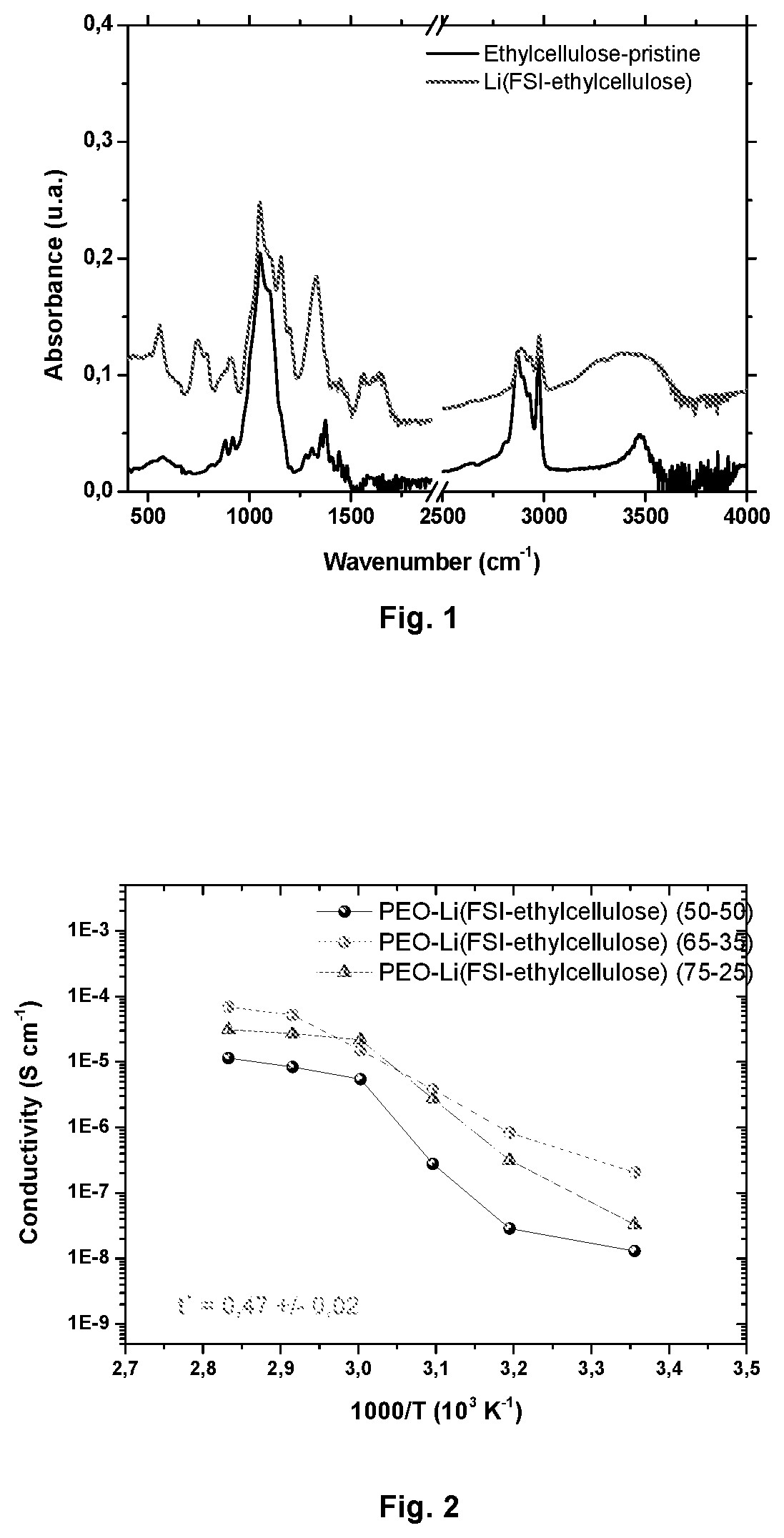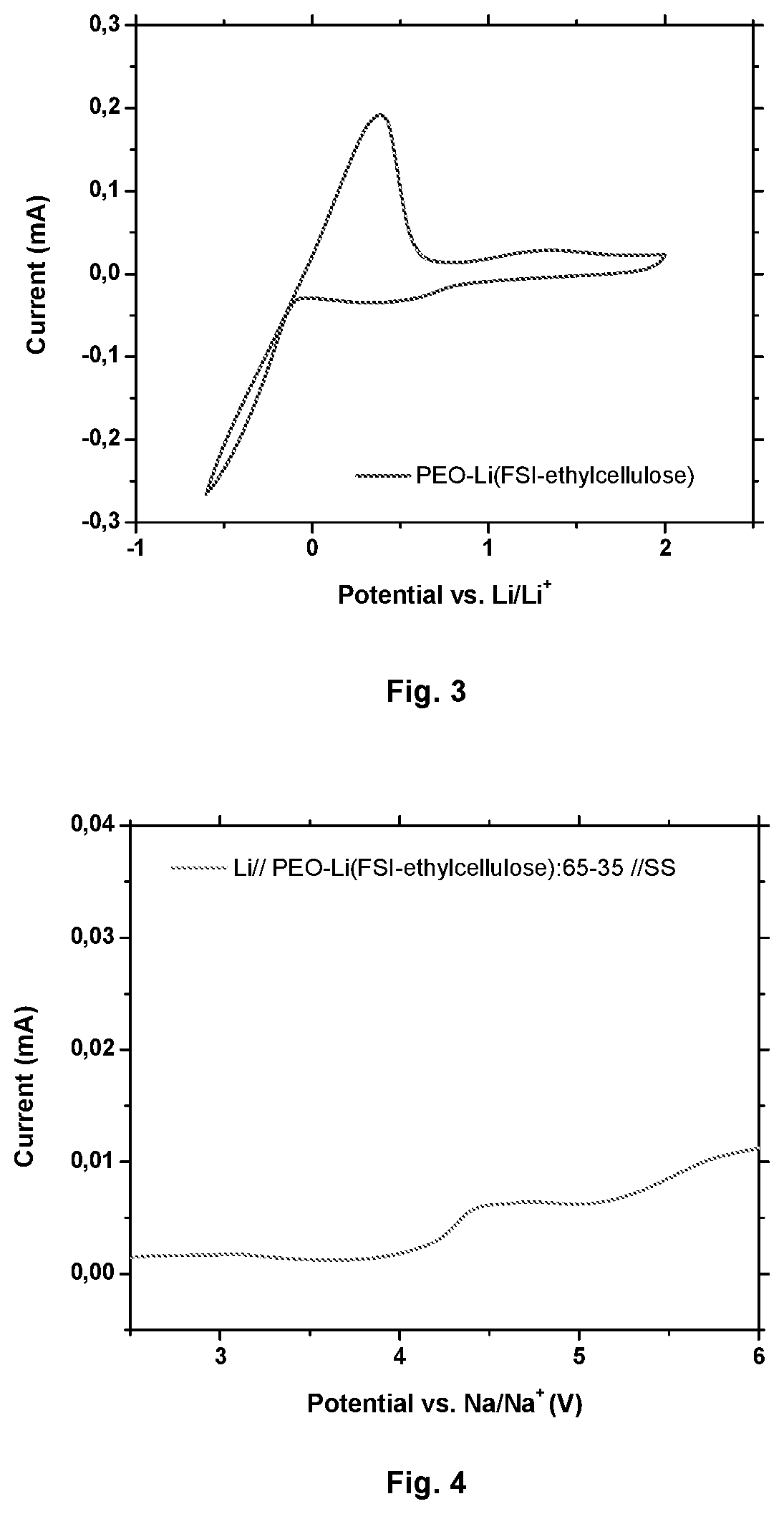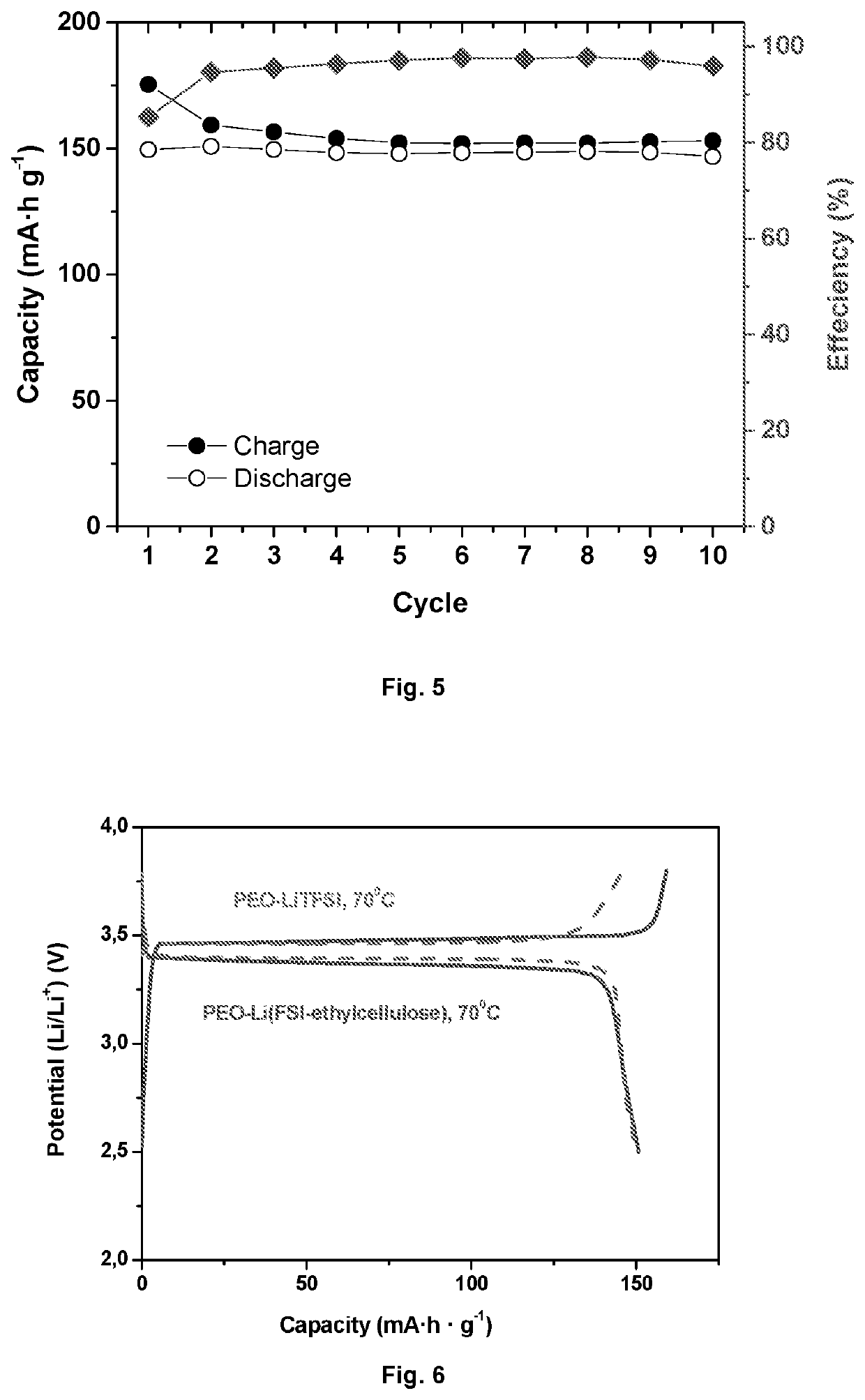Solid polymer electrolyte based on modified cellulose and its use in lithium or sodium secondary batteries
a technology of modified cellulose and solid polymer electrolyte, which is applied in the direction of solid electrolytes, electrical equipment, electrochemical generators, etc., can solve the problems of increasing the resistivity of electrolyte, reducing the mechanical properties of lithium/sodium based batteries, and reducing the power capacity. , to achieve the effect of good mechanical properties and practical conductivity
- Summary
- Abstract
- Description
- Claims
- Application Information
AI Technical Summary
Benefits of technology
Problems solved by technology
Method used
Image
Examples
example 1
n of Li(FSI-Ethylcellulose) and Na(FSI-Ethylcellulose) Solid Polymer Electrolytes (SPEs)
[0093]Ethylcellulose (48% ethoxyl (w / w)) purchased from Sigma-Aldrich and fluorosulfonyl isocanate from PROVISCO CS Ltd. The ethylcellulose was lithiated using lithium hydroxide in acetonitrile for 16 hrs at room temperature. Then the lithiated ethylcellulose is reacted with fluorosulfonyl isocyanate in acetonitrile for 16 hrs at room temperature to obtain Li(FSI-ethylcellulose) and Na(FSI-ethylcellulose). The degree of modification was measured by ICP and values of 48% and 53% were measured for Li(FSI-ethylcellulose) and Na(FSI-ethylcellulose), respectively. Poly(ethylene oxide) (PEO) and modified ethyl cellulose (EC) bearing covalently attached anion lithium / sodium salt were blended to form PEO / Li(FSI-ethylcellulose) and PEO / Na(FSI-ethylcellulose) SPEs, respectively.
[0094]PEO based SPEs were prepared with different compositions, ranging from 25% up to 50% of modified ethyl cellulose. Transferen...
example 2
ion of Chemical Modification of Ethyl Cellulose
[0095]The FTIR spectra of FIGS. 2 and 10 of Li(FSI-ethylcellulose) and Na(FSI-ethyl cellulose) show new bands at 557 cm−1 assigned to the SO2 bending, at 740 cm−1 assigned to the S—N stretching, at 792 cm−1 assigned to the S—F stretching and at 1153 cm−1 / 1196 cm−1 assigned both to the SO2 stretching which indicates that the chemical modification of ethyl cellulose was successfully carried out.
example 3
ductivity and Transport Properties of PEO / Li(FSI-Ethyl Cellulose) and PEO / Na(FSI-Ethyl Cellulose)
[0096]The measured ionic conductivity of the different membranes with varying lithium content at different temperatures is presented in FIGS. 2 and 12. The average number of lithium ions per ethylene oxide units was varied from 8, 15 and 25. The membrane with [EO] / [Li or Na]˜15 shows high conductivity values over the measured temperature range. A high Li ion transference number of 0.47 was observed for the membrane with [EO] / [Li]˜15 compared to 0.14 of only pure PEO / LiFSI. In the case of PEO / Na(FSI-ethyl cellulose) [EO] / [Li or Na]˜15, a high Na-ion transference number of 0.60 was observed.
PUM
| Property | Measurement | Unit |
|---|---|---|
| temperature | aaaaa | aaaaa |
| temperatures | aaaaa | aaaaa |
| transference number | aaaaa | aaaaa |
Abstract
Description
Claims
Application Information
 Login to View More
Login to View More - R&D
- Intellectual Property
- Life Sciences
- Materials
- Tech Scout
- Unparalleled Data Quality
- Higher Quality Content
- 60% Fewer Hallucinations
Browse by: Latest US Patents, China's latest patents, Technical Efficacy Thesaurus, Application Domain, Technology Topic, Popular Technical Reports.
© 2025 PatSnap. All rights reserved.Legal|Privacy policy|Modern Slavery Act Transparency Statement|Sitemap|About US| Contact US: help@patsnap.com



